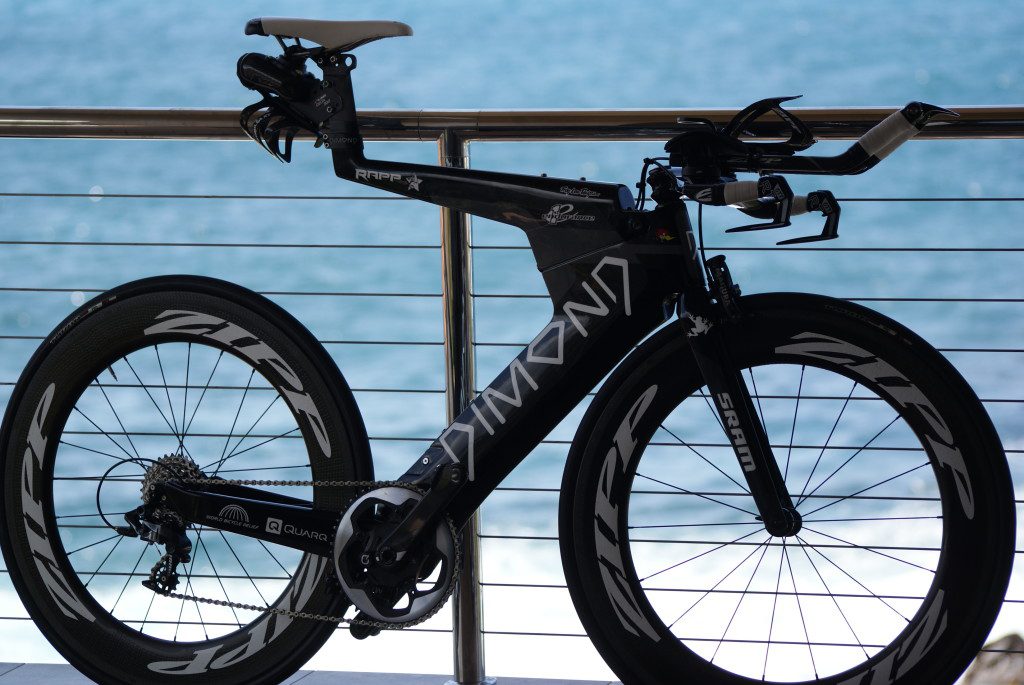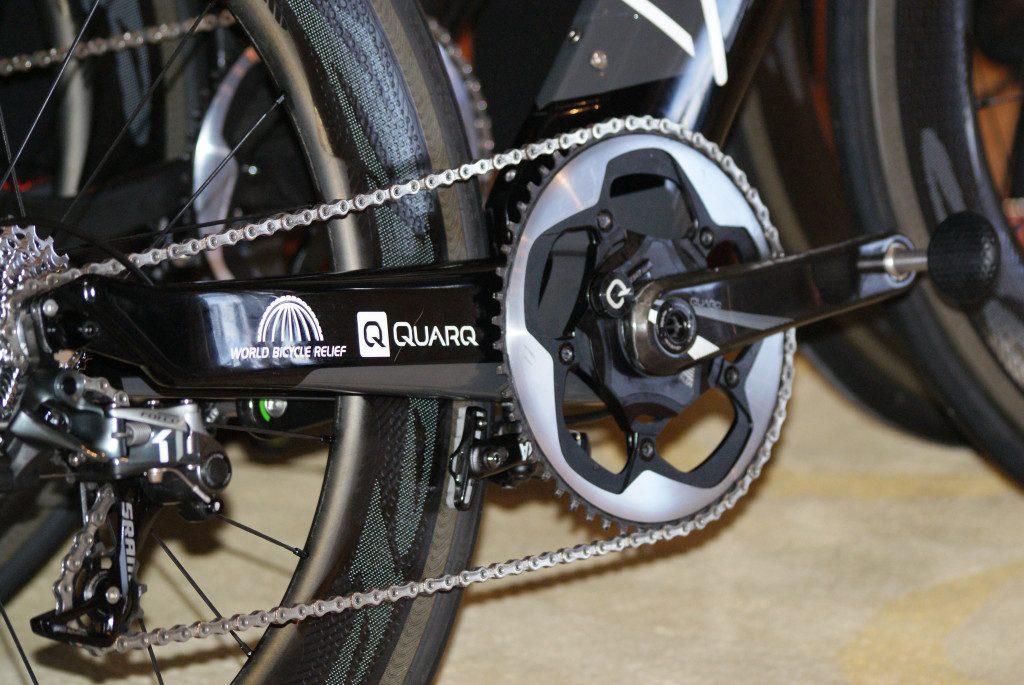SRAM 1X: Triathlon Ready

At a time when electronic shifting has become “de rigueur,” especially in high-end bikes, it seems a bit crazy to talk about a system that, in essence, halves the number of gears you’ll have available to you, but after a few rides with SRAM’s 1X system, I can see why triathletes will likely be embracing this new gruppo on their bikes when it becomes available.

SRAM developed 1X for mountain biking four years ago. The idea was to get rid of the front derailleur, which is especially nice for off-road riders who were going over really rough terrain and having issues with their chains coming off at critical times.
(Just in case I’ve lost anyone, here’s a quick primer: the chainrings are the big “gears” you have up front next to your cranks. Most triathlon bikes will have two of those, which are changed by the front derailleur. Many tri bikes will come with a 42- and 53-tooth chainrings. The gears at the back of the bike, attached to your rear hub, are all part of your cassette, which often come in a range from 11 to 23, 25, 26 or 28 teeth. Those gears are changed by your rear derailleur.)
As opposed to a bike with a front derailleur, where the chain is designed to come off one chainring and shift to the other, SRAM engineered a special front chainring for the 1X system that ensures the chain always stays on. It’s not just a regular front chainring with the inside ring taken off. Cyclocross riders, who typically go over rough terrain and constantly pick their bikes up and then hammer them down on the ground, were quick to pick up on 1X. Considering all the times I’ve seen triathletes struggle with a lost chain during races – having a component system that is designed to keep the chain on at all times makes a lot of sense for them, too.
This all sounds good, but I know what you’re all thinking: you don’t live in Florida and have to get up hills all the time. You need more gears. Turns out that’s not as much of an issue as you’d think. First off, the 1X system offers you lots of gear options – when push comes to shove, you can get pretty much the same hard and easy gears you have on your bike now. Also, when you think about it, how often do you find yourself facing a major climb in a triathlon? Triathlon race directors tend to shy away from extremely challenging and technical bike courses because they know that will deter many of their potential customers. Also, many triathletes will often use a road bike for their really challenging rides and have a tri bike for races and flatter, faster efforts.
In order to be able to make all this work, SRAM had to come up with a way to give riders enough gears on their cassette so that they could get away with having just the one chainring up front and still have all the gearing they would need to climb and descend hills. They developed a new derailleur system with a somewhat beefier cage with more tension (it keeps the chain tighter) that could handle a much wider gear range and, combined with the specially designed front chainring, works to keep the chain on.

An added bonus for triathletes is there’s an improvement in aerodynamics and a drop in weight without the front derailleur and one of the chainrings. In practice the weight savings aren’t that significant – the real benefits to this system is the simplicity. The chain stays on, shifting is very sharp and you never have to worry about trimming (adjusting) your front derailleur. (Of course, if you’re using Shimano’s Di2 electronic shifting, you also don’t have to worry about trimming the front derailleur – the system does that for you. SRAM uses what they call “yaw” in their front derailleurs to take care of any chain rub, too.)
There’s all the theory. How does this really work in practice? In a word: great. SRAM shipped off three different cassette options for me to use: 11-26, 11-28 and 11-32, all combined with a 54-tooth chainring. (I had the option of using a 52-tooth chainring, but since I typically ride a 55 up front, I wanted to have something as close to that as possible.) I’ve yet to try anything other than the 11-26 so far, which has been more than ample for me to get up all the climbs around my home in Hamilton, Ontario. I also got the bike out for numerous rides during a trip to the Bahamas, which was mostly flat, where I really got to enjoy the benefits of the 1X system. I tend to be a “grinder” – I push big gears when I ride – so it comes as no surprise that I’m liking the 11-26 option. If you’re even remotely worried about not having enough gears to get through even the toughest of courses, relax – the chainrings come in two-tooth increments from 38 to 54, and SRAM offers up to an 11-36 cassette option (and there’s talk of creating some road hubs that will eventually allow people to use a 10-42 cassette that’s available for mountain bikes) which should get you up pretty much any climb.
Shifting really is very precise and there is absolutely no chain bounce, even on the roughest terrain. While others were trying to make rapid changes over rolling terrain from big to small chainrings (or vice versa), I was able to use just the one shifter to get it all done.
There are some downsides. You don’t have as many gear options without that second chainring and, because there is a bigger range in your cassette, you’ll find there are some jumps between gears that you might not be used to, especially on the easy end of things. That’s not so noticeable on a flatter ride where you’re using some of your harder gears, but once you start climbing you’ll find that you don’t have quite as much choice. 1X is also only available as part of SRAM’s Rival or Force group sets, not the top of the line Red gruppo. The only real difference between the Red and Force derailleurs is weight, and overall the 1X system is a bit lighter, so that shouldn’t be a deal breaker, but us triathletes tend to have a thing for “top of the line” components.
You’ll have to decide if that’s a deal breaker for you when it comes to the 1X system, but my guess is that for most triathletes it really won’t be. Jordan Rapp is a huge proponent of the 1X system, and scorched the field on the bike in Mont-Tremblant (a course which is considered to have some challenging climbs) on it last August, setting a new bike course record along the way.
If you’re not ready to anti-up for an electronic system and won’t be taking on any events through the Rockies or the Alps in the foreseeable future, SRAM’s 1X system might be for you.
Next week I’ll write about some specific rides I’ve done with the 1X components.
